We live in an automotive world dominated by compact SUVs and one of the biggest names is the Honda CR-V. However, there’s another competitor that gains sales traction each year: the Subaru Forester. It’s been gradually eating into big competitors market share, and for 2025 it was completely redesigned. So who wins in a 2025 Subaru Forester vs. 2025 Honda CR-V battle? Let’s go ahead and find out!
Pricing and Equipment
So, first off, let’s discuss pricing for these two family SUVs.
Starting with the popular CR-V, we have the fully loaded Sport Touring trim level. Honda doesn’t really offer any other options so with destination and paint it comes in at a touch over $42,000.
CR-V (Sport Touring AWD): $40,800 | Options: +$0 | Destination: $1,350 | Total: $42,150
Moving to the all-new Subie, its top trim is also called Touring [p] and similarly it comes standard with everything. After destination, makes its grand total around $700 less than the CR-V.
Forester (Touring AWD): $39,995 | Options: +$0 | Destination: $1,395 | Total: $41,390
By the way, if you want to get the best price from local dealerships and access to invoice pricing info for these two models or any vehicle, we have a tool on our website to do just that. Click here for more information!
Exterior Design
Starting with the exteriors, you’ll see that both crossovers have premium appearances in their top trims. For the all-new Subaru, they’ve stretched the grille out this year to increase the aggressiveness and both models finish it in gloss black. We don’t award points based on design preferences, but for lighting we do have some differences. Both come with LED lighting on all trims, but only the Subaru has projector-beam LED’s instead of reflector ones, plus adaptive bending abilities.
Furthermore, it’s the only one that has LED fog lamps as well.
Continuing to the sides, the Forester gains about an inch of length for the all-new generation, but it still isn’t quite as long as the CR-V. Let that be a hint regarding interior space later, but for now, you’ll find large 19-inch alloys on both the Forester and CR-V and neither model offers color contrast roof options.
Length: 184.8-inches (CR-V) | 183.3-inches (Forester)
Next up, we have the rears. You may have your own opinion regarding designs, but as far as features, you’ll the same set with partially LED taillights, exposed exhaust outlets, and rear wipers.
If you’re looking to tow, the Forester will be your better choice at at 1,500 lbs. vs. the CR-V’s 1,000 lbs.
Towing: 1,000 lbs. (CR-V Hybrid) | 1,500 lbs. (Forester)
Additional Features
Now moving on to some individual features, you’ll find nice gloss black mirrors on both. They have BSM, heating, and LED turn signals.
But family SUVs need to be safe, and one of the really nice things about these two is that all four of your major active safety features are included standard. Their warranties are also mostly the same as well, besides for the Honda’s 1 year of complimentary maintenance.
Warranties (Both): Basic: 3yr/36k mi | Powertrain: 5yr/60k mi
Honda: 1 yr/12k mi Maintenance
It’s been a tight race so far, and it’s now time to compare the interiors.
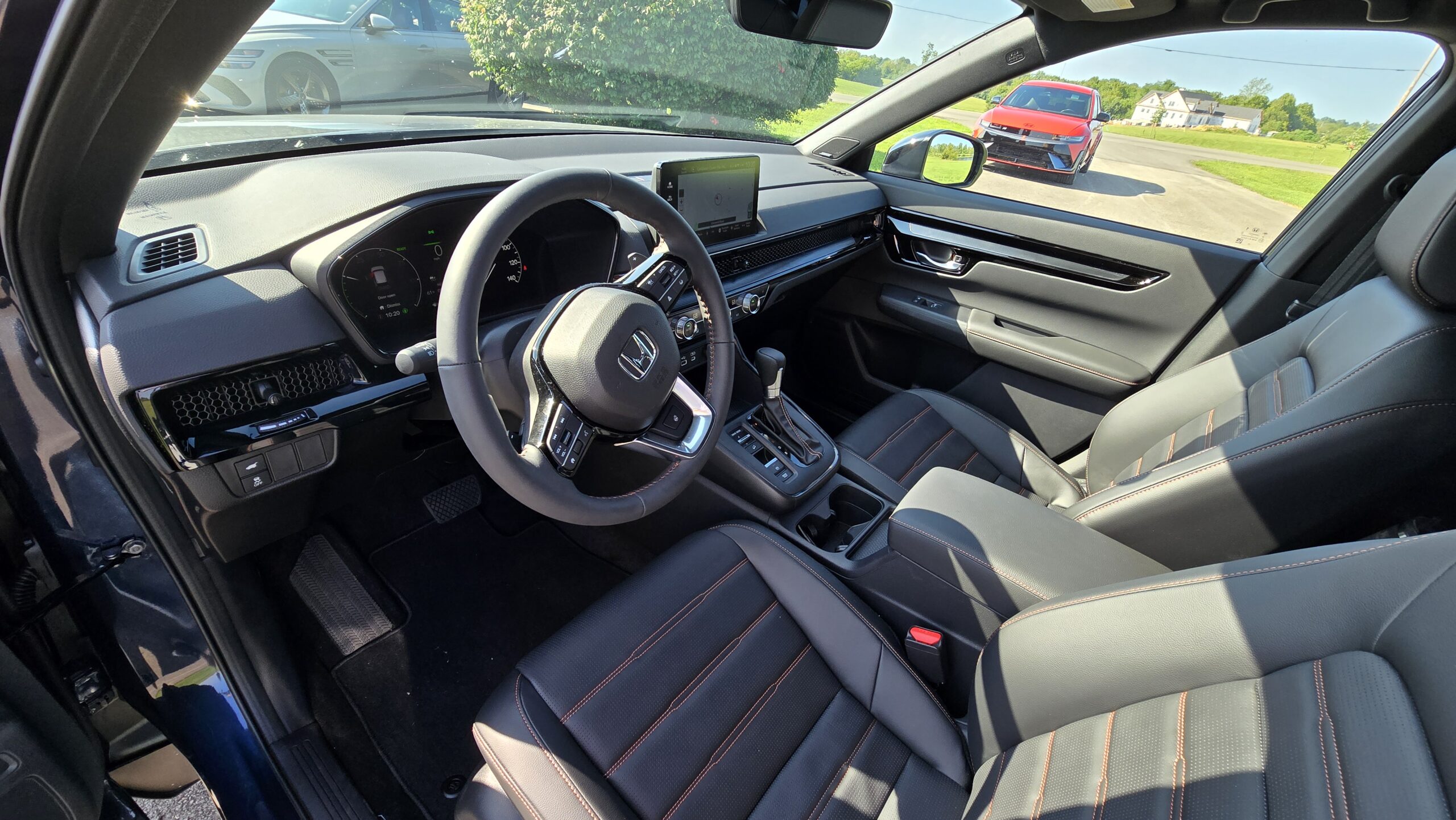
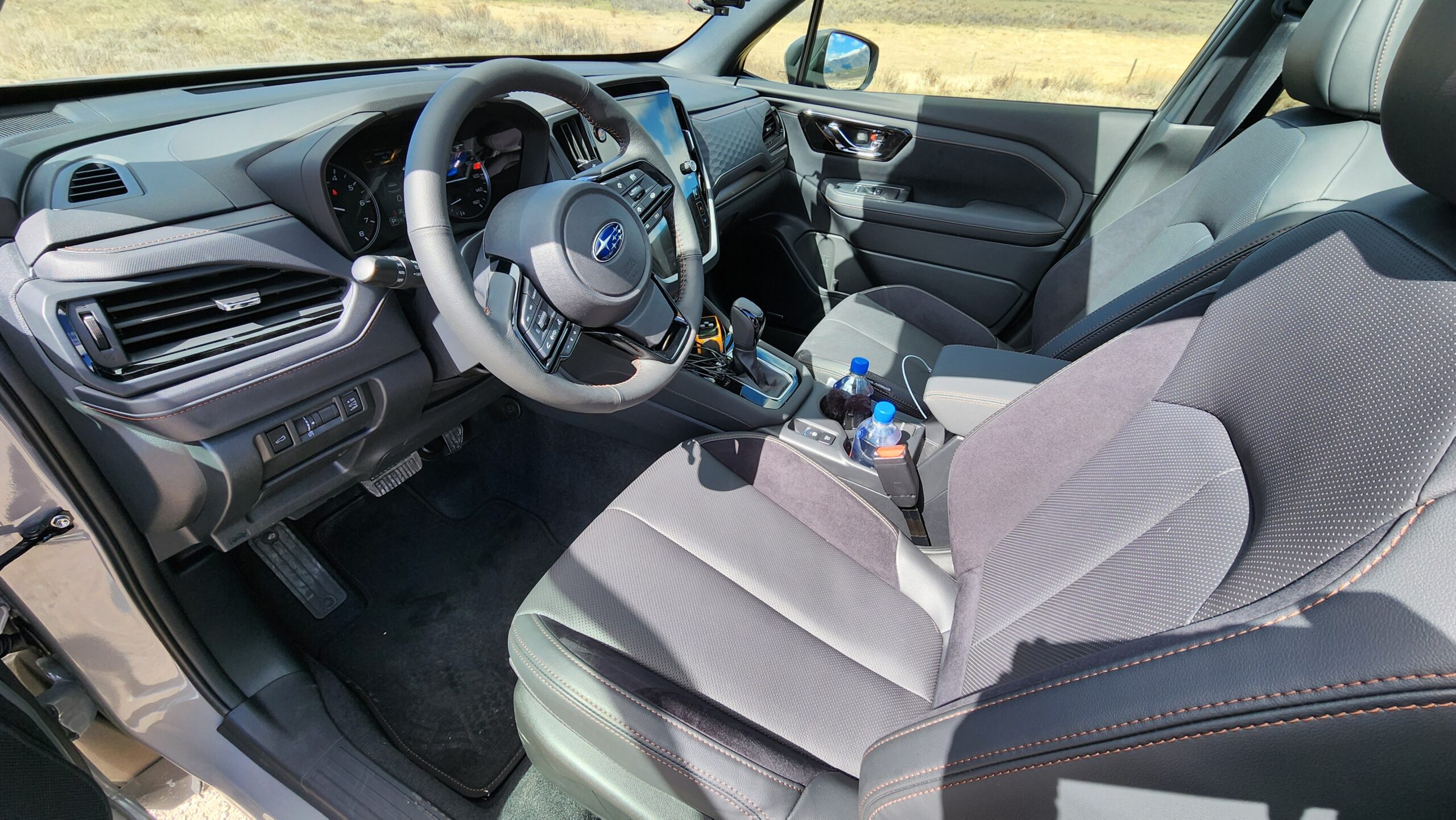
Interior Design
Approaching both SUVs, they have smart entry systems with premium key fobs. Remote start is available on both, but only the Honda is including it on the key fob for life.
Note: Subaru’s remote start is activated via the StarLink App (free during trial period)
Both have sensors behind the door handles to unlock and after opening the doors, you’re going to see spacious, and surprisingly nice cabins in their high trim levels.
Before we dig into the features, let’s start with the seats. The Honda gets a real black leather seat for the Sport Touring trim, and the Forester also gets a real leather with Alcantara suede accents.
For seat adjustability, both come in the same with 10-way power adjustment and 2-way lumbar support. However, it’s the Subie that has the advantage with seat climate, as it now includes seat ventilation for 2025. Unfortunately, that’s something that the CR-V can’t get on any trim, but both will include memory ability.
Now once inside the cabins, let’s check out the major point category of material quality. In this regard, both have very solid cabins for this segment with nice materials. They aren’t the most premium for the segment, but overall feel high quality, substantial and not different enough from one another to award a point.
After startup, you’ll see a pretty big difference. Despite being all-new, Subaru still has the traditional gauge cluster design with a 4.2-inch display in the middle. The CR-V doesn’t have a full digital display either, but is including a larger 7-inch half digital display with more customizability.
Neither have the option of a head up display, and moving back, they both have heated, leather wrapped steering wheels, along with rain sensing wipers as equipped.
Storage and Technology
Now it’s time to evaluate another major interior section: storage. This is a big deal for many families, and in this regard, the CR-V pulls away with the lead. When conducting our signature Car Confections donut volume test, the CR-V holds over double the volume – 20 donuts compared to 9 in the new Forester. It also has a larger storage area in front of the shifter in addition to both having wireless charging pads. Honda almost always has incredible storage solutions the CR-V is no exception – beating the still-good Forester.
Surprisingly, both have traditional shifters, and when in reverse, you’ll see a new feature for the Forester this year. And that would be a 360-degree camera system which is something Honda has still not added to any version of the CR-V.
For climate, both have dual-zone automatic setups with physical buttons for the main temperature adjustment. But if you need to mess with any of the extra controls in the Forester, the interface can be laggy when you first turn on the vehicle.
And for audio, both have their respective upgraded audio systems. That means the Honda has a Bose and the Subaru a Harmon Kardon system. Let’s take a listen.
Both have good audio quality that buyers in this segment will appreciate. However, they aren’t different enough to score a point.
Forester: 11-speakers Harmon Kardon
CR-V: 12-speaker Bose CenterPoint
What is worth scoring a point will be your in-car technology, though. Both are good, but in the CR-V we have a 9-inch display for the top trim, and not to be outdone, the all-new Forester adopts the large 11.7-inch display from other Subaru products this year. That’s a whopping 26% more screen real estate, and as far as functionality, both have integrated navigation systems and wireless Apple CarPlay and Android Auto.
As we wrap up the front of the cabins, both have auto-dimming mirrors. However, Honda has removed the HomeLink ability unless you pay an extra $250 to add it back, and it also does not include the rear camera system that you get on the Forester Touring, either.
Lastly, both have sunroofs to let air in but it’s the Forester with the panoramic style setup that is about twice as large as the CR-V’s standard size.
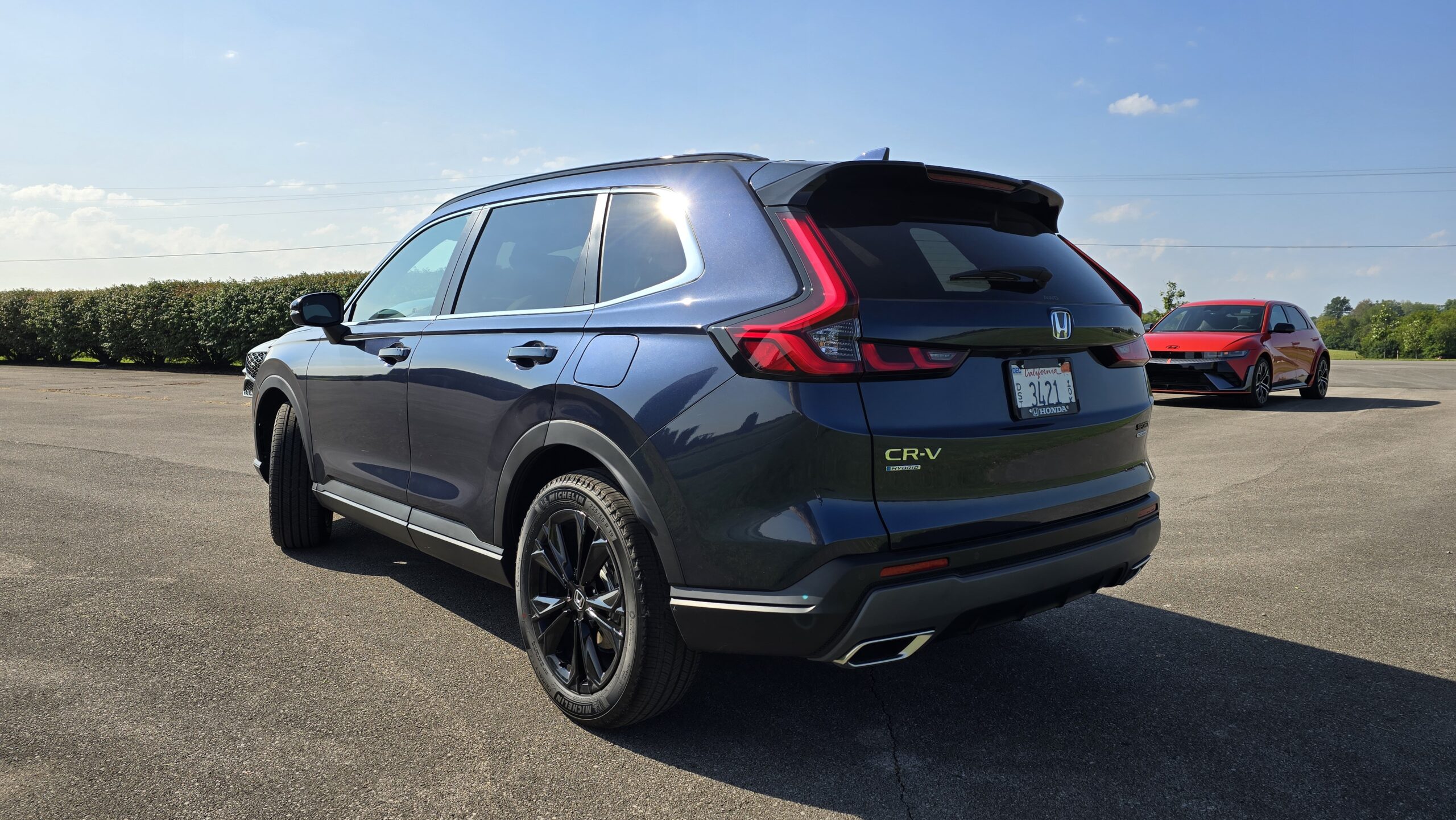
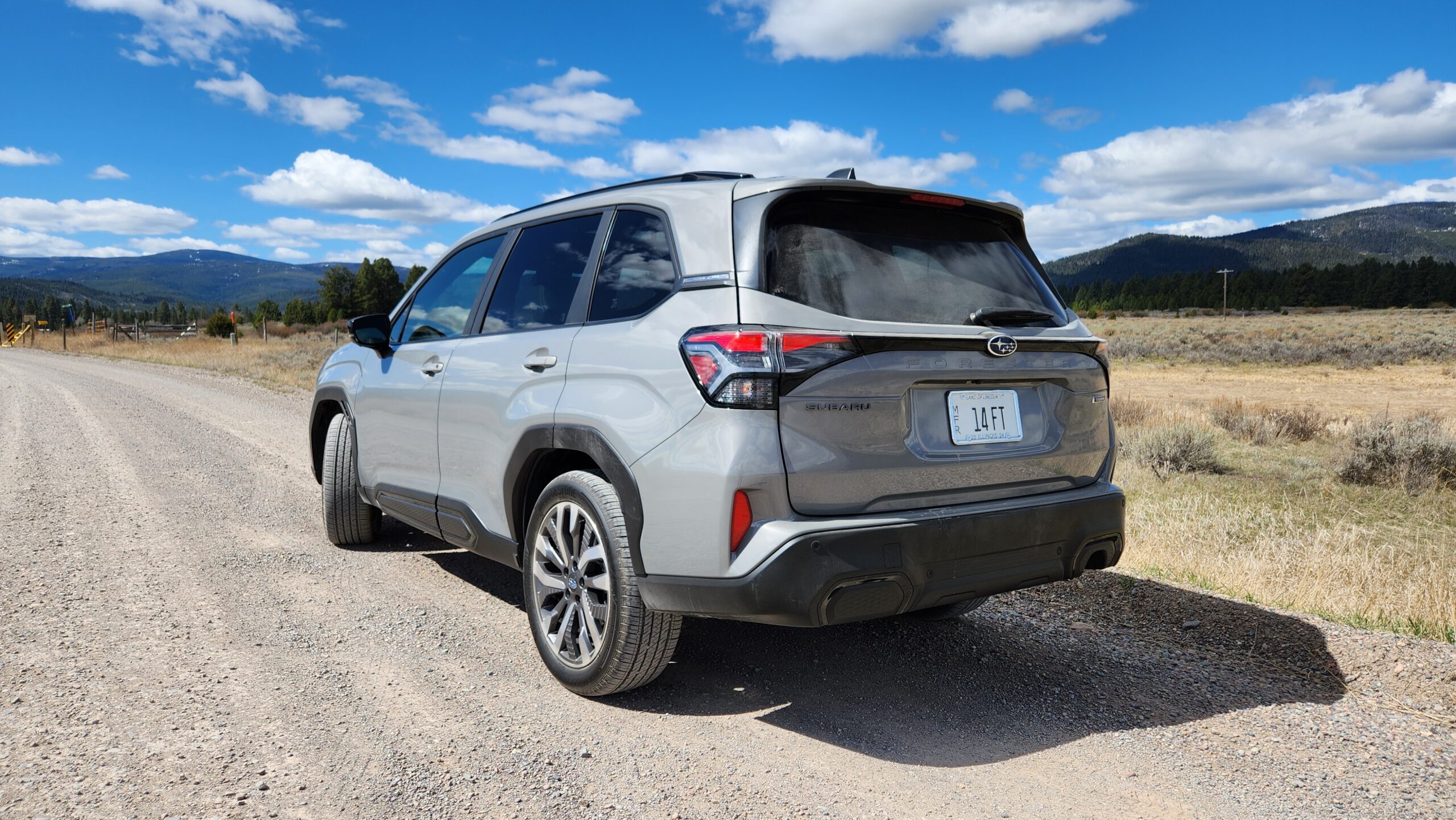
Rear Seats and Cargo
But compact SUVs are made for American families, so how are the back seats? Well, both are going to have impressive amounts of space. As a matter of fact, some of the best space you can get in the entire segment. The CR-V has about 3% more rear legroom and the Forester about 3% more headroom. Both of those aren’t quite at the 5% threshold required to score a point.
Forester: Legroom: 39.4 inches | Headroom: 39.6 inches
CR-V: Legroom: 41.0-inches | Headroom: 38.2-inches
Now that that’s out of the way, they also have quite a few features. Both give you two USB ports and rear vents, but only the Forester Touring has heated rear seats – once again unavailable on CR-V.
However, CR-V fights back with special 8-position reclining rear seats. While Forester does also have a reclining function, it doesn’t go back nearly as far as the CR-V making it less comfortable.
Now let’s see how much stuff you can bring along with you for the journey. Both have power tailgates with hands-free ability, and once they open up, you’ll find a large 35% advantage in the CR-V behind the 2nd row of seats. That advantage lessens with all the seats folded down, but the space-king CR-V still can’t be beaten with a 10% advantage as a maximum.
CR-V: Behind 2nd row: 39.3 cubic feet | Max: 76.5 cu.ft
Forester: Behind 2nd row: 27.5 cu. ft | Maximum: 69.1 cu. ft (w/ pano)
Only the Forester has a spare tire, and it’s also only the Subaru that includes premium switches to easily fold the 60/40 split folding seats.
But there are a number of differences when it comes to the driving experience so let’s go ahead and dive into that
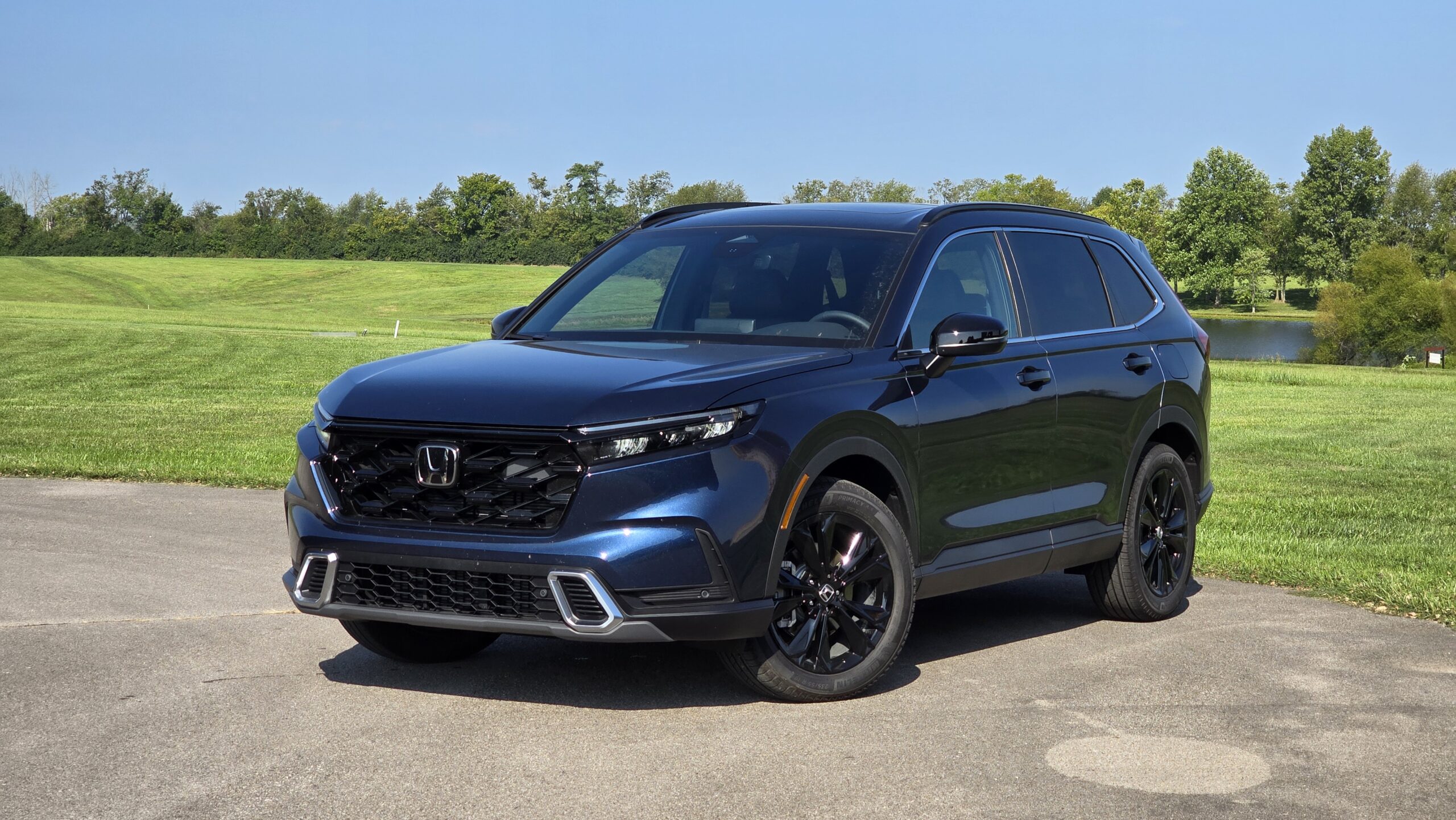
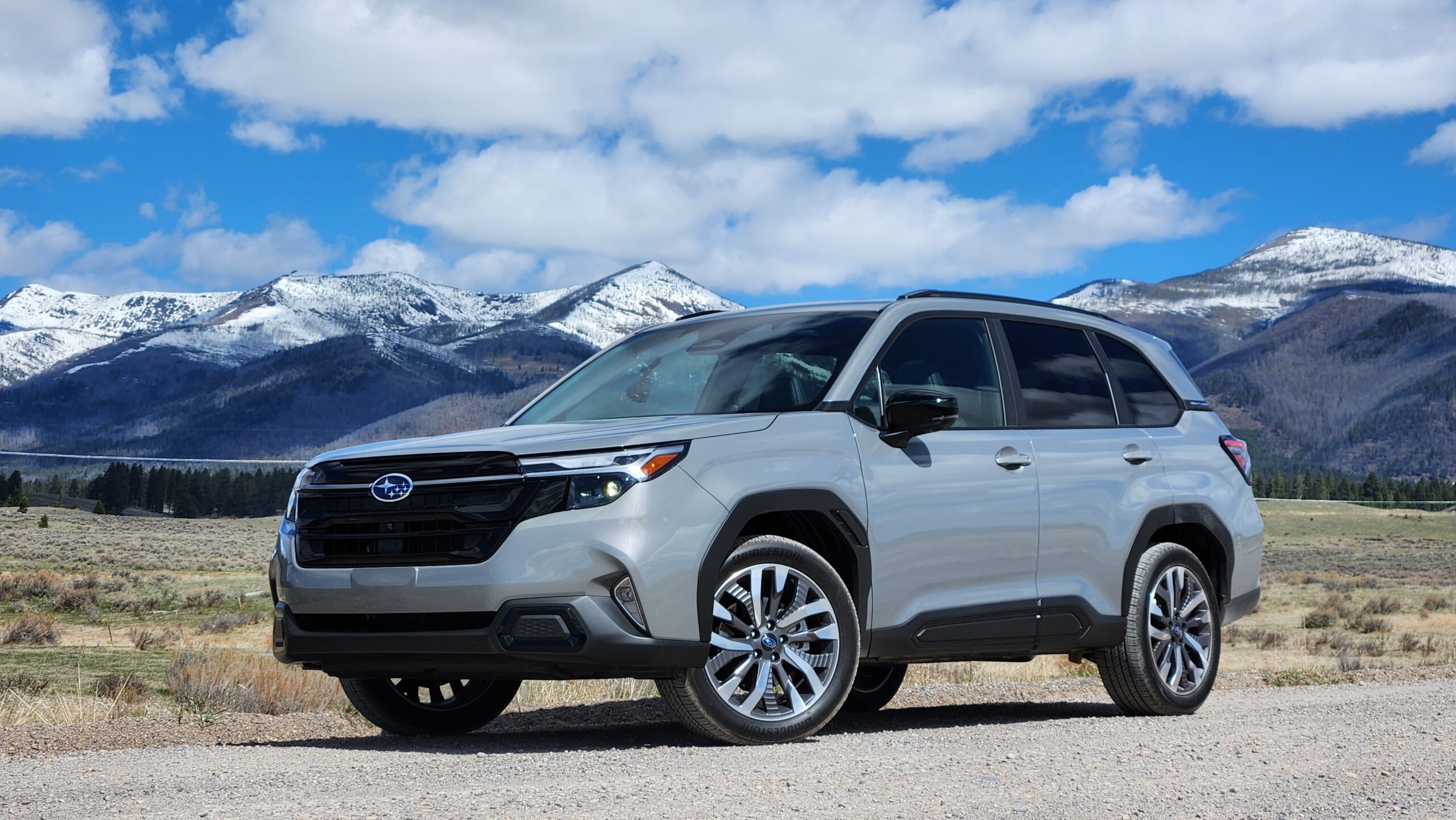
Powertrains
As I just said, the driving experience for these two crossovers is very different. That begins with what’s under the hood. The all-new Subaru Forester has a traditional 2.5L Boxer-4 for 2025, but half of the CR-V trims, including this Sport Touring, are Hybrid-exclusive. While the Forester will have a Hybrid eventually at the time of this video, we have no estimated on-sale date or detailed information about it. That means, as far as performance in real life, the CR-V is significantly quicker when accelerating because of its additional 24 horsepower and 69 lb. ft. of torque.
CR-V: 2.0L I-4 + 2 electric motors: 204 hp | 247 lb.ft
Forester: 2.5L Boxer-4: 180 hp | 178 lb.ft
When it comes to transmissions, both are using either a CVT or an eCVT-like setup. They have similar performance and feel, but more importantly, let’s talk about off-road capability. Here, the Forester pulls ahead with greater ground clearance and while both have standard AWD, it’s only the Forester’s that is a full-time AWD setup vs. part-time. This is what has long given the Forester its reputation for adventuring.
Test Drive and Fuel Economy
Now let’s talk about the ride quality. In this area, both impress and have better-than-average ride quality and very comfortable seats. I do also want to point out that while it’s not a focus of any compact SUV, the Honda CR-V puts much more of an emphasis on the driving experience. The steering, while light, feels precise and body roll is much better managed than others in the segment.
But that aside, how quiet are the cabins? Here at Car Confections, we take a sound level readings of every vehicle we test on our channel. Unfortunately, the Subaru’s was taken on a press event in Montana so it can’t be scored officially but here are our readings for reference.
CR-V: 55.8 dB @ 55 MPH
Forester: 57.6 dB @ 55 MPH
Now as you might expect from the Hybrid CR-V, you will get a fuel economy advantage. This hybrid system delivers great MPGs of 37 combined with AWD, which is 8 MPG better than the Subie. That will add up over the lifetime of owning the vehicle, but keep in mind the Forester will get a hybrid eventually.
CR-V Hybrid AWD: 40/34/37 MPG
Forester AWD: 26/33/29 MPG
Resale and Reliability
In our reviews and comparisons, we are also adding in reliability and resale information to give you a better picture of the overall value beyond just the original MSRP.
Beginning with reliability, we developed the Combined Reliability Index, which takes into account several studies from trustworthy sources, and combines them in a way that gives a more holistic picture. Subaru ranks 12 slots above the industry average for all brands in reliability, while Honda is also one of the top brands at 15 slots above average.
We also put Mason’s economics degree to work to develop a detailed Predicted Resale Value tool. After 5 years and 60,000 miles, both brands are incredible. Honda has the highest predicted resale value of 64.8% and Subaru the third best at 63%.
Resale is obviously important because it determines how much money you get back, but we can’t forget about the price difference at the original purchase. The CR-V costs $760 more than the Forester.
I want to emphasize that if money, reliability or resale value matter less to you personally, feel free to disregard these points. And if you’d like to check out all our data about reliability and resale values, as well as learn about our methodology, make sure to head to www.carconfections.com/resale and www.carconfections.com/reliability. Buying a car is a big decision, and this is a great place to compare all the makes you might be cross-shopping.
2025 Subaru Forester vs. 2025 Honda CR-V!
So, there you have it; this was a hard fought race, but let’s discuss who should be “your” winner…
Forester:
- Extra luxury features not on CR-V (vented seats, 360 camera, heated rear seats, panoramic moonroof)
- Off road capability
- Gasoline available in top trim (CR-V is hybrid only in top trim)
CR-V:
- Hybrid powertrain experience (more powerful and better fuel economy)
- Space (Better storage solutions and cargo capacity)
- Honda resale/reliability
Now we want to know your opinions, so make sure to head to the comment section and let us know which one you would pick!
Thanks for joining us for another Car Confections Comparison! We’ll catch you next time as we sample the latest automotive delicacies!


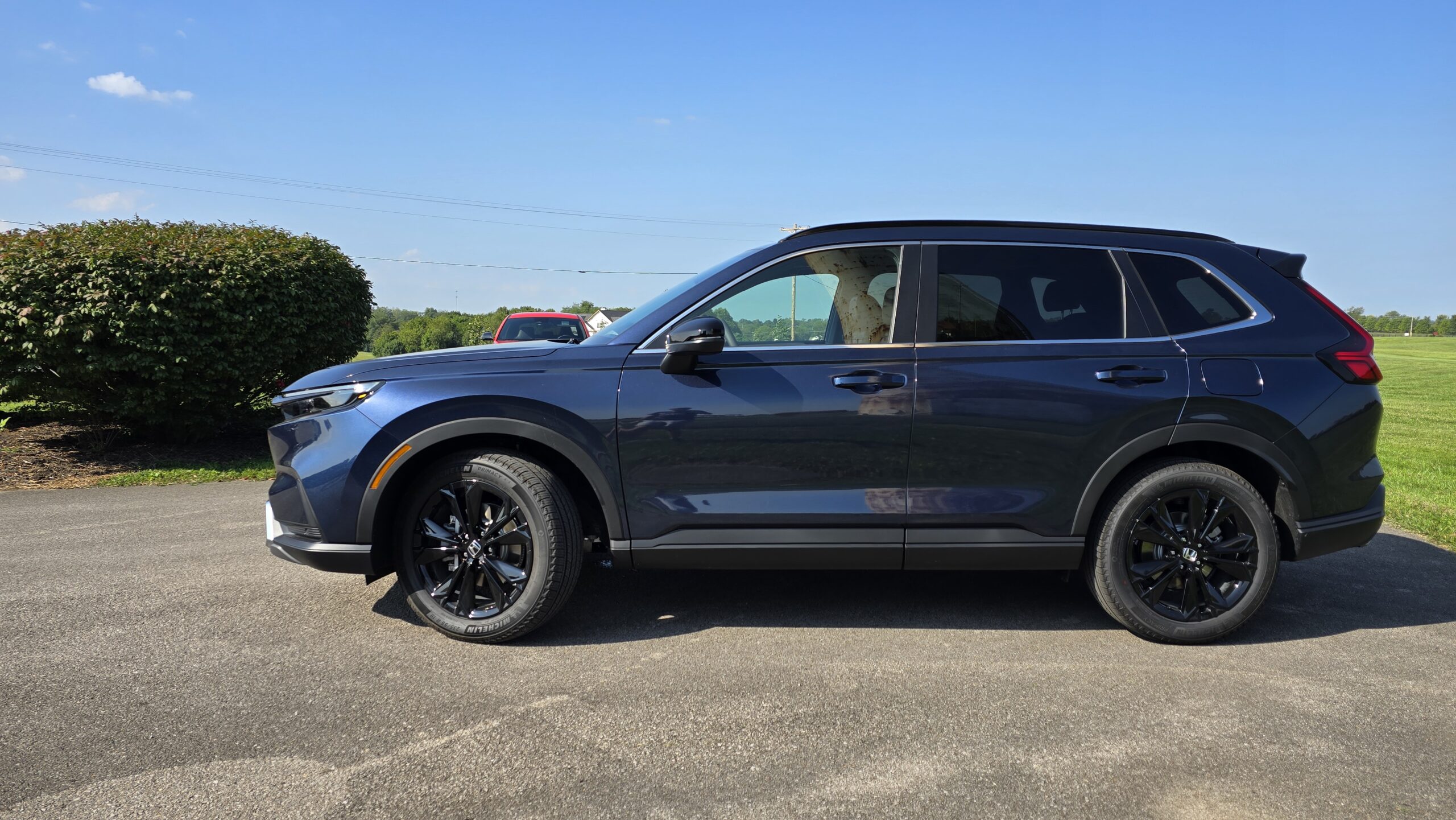
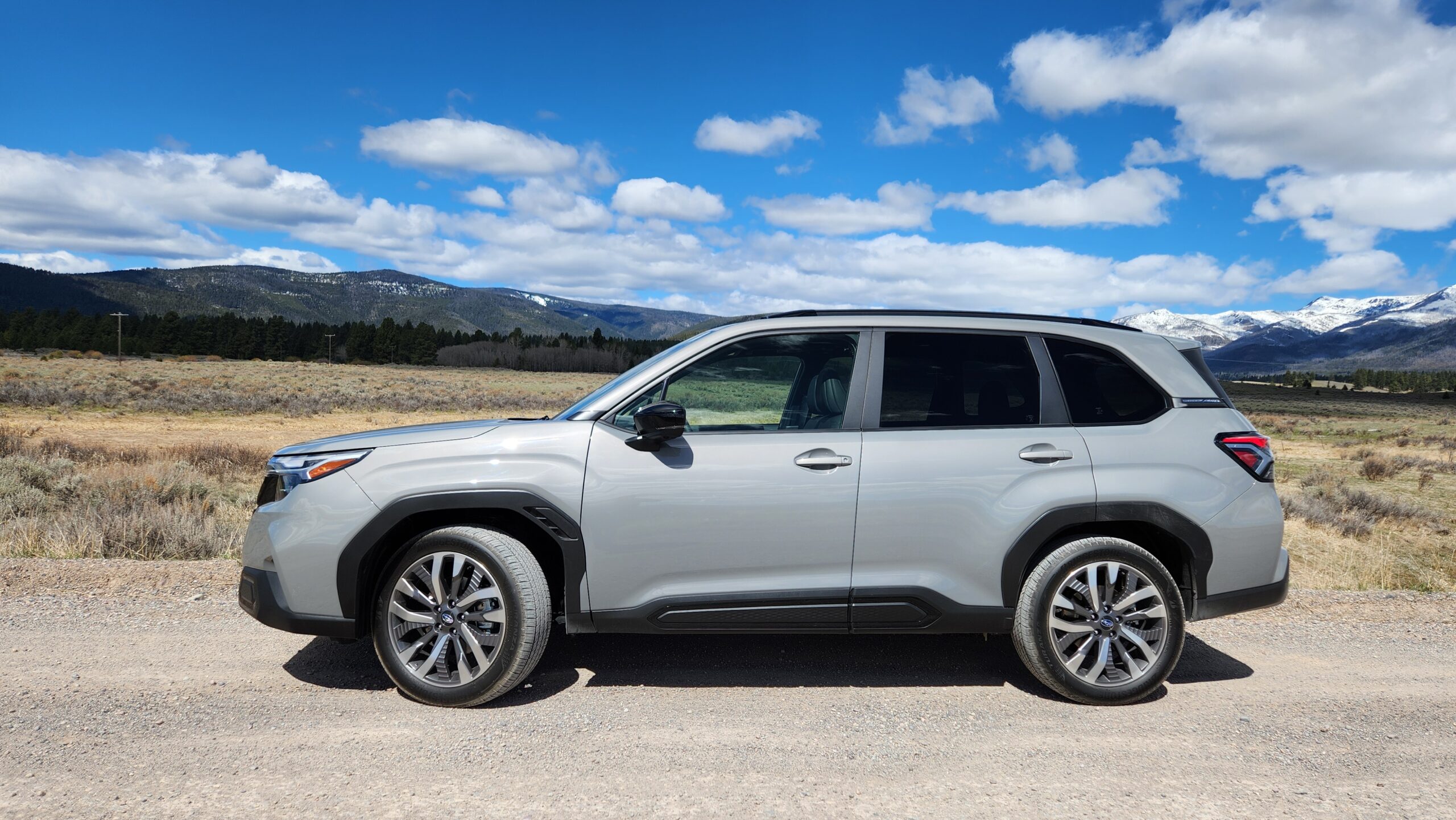
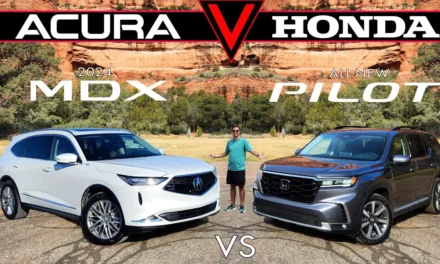









Recent Comments